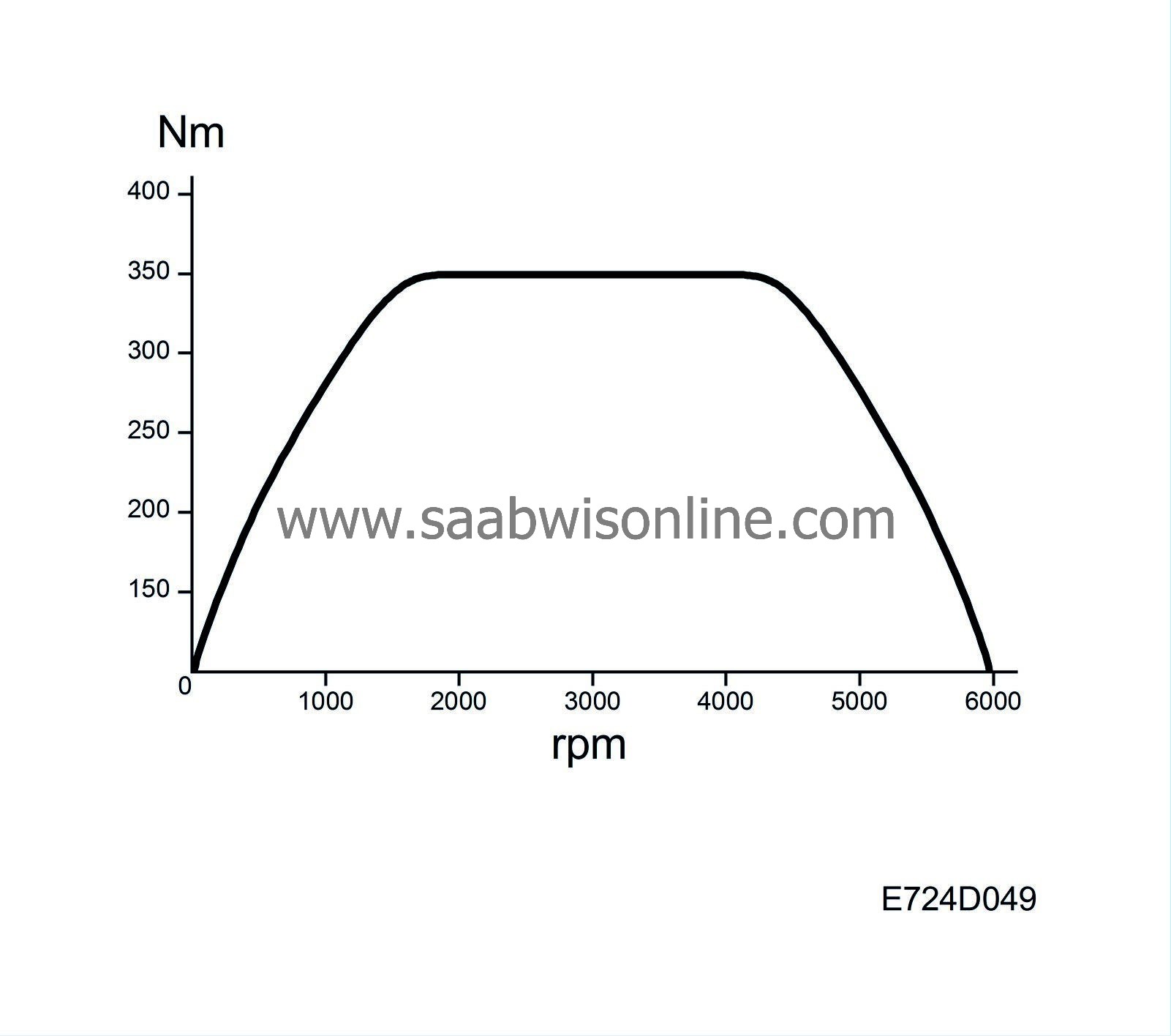Air mass limitation
| Air mass limitation |
| Maximum engine torque |
The engine torque curve is stored in the control module memory. It specifies the maximum engine torque at various engine speeds.
Engine alternative B235R with manual gearbox has a function called "overboost”, which provides a slightly higher engine torque for 20 seconds. For further information concerning overboost, see Overboost function .
Engine torque is directly proportional to air mass/combustion at the current engine speed.
The unit in the engine torque curve, Nm, is converted to mg air/combustion.
The value taken from the curve is the maximum air mass/combustion value the engine variant allows.
BioPower
The engine's maximum torque and output varies depending on current adapted ethanol content. This is mainly a consequence of a further table for engine torque for E85 operation, added into the memory of the ECM. The table permits a higher engine torque. With adapted ethanol contents of 0-5% the table for petrol operation is used, while with 80-85% the new table for E85 is used.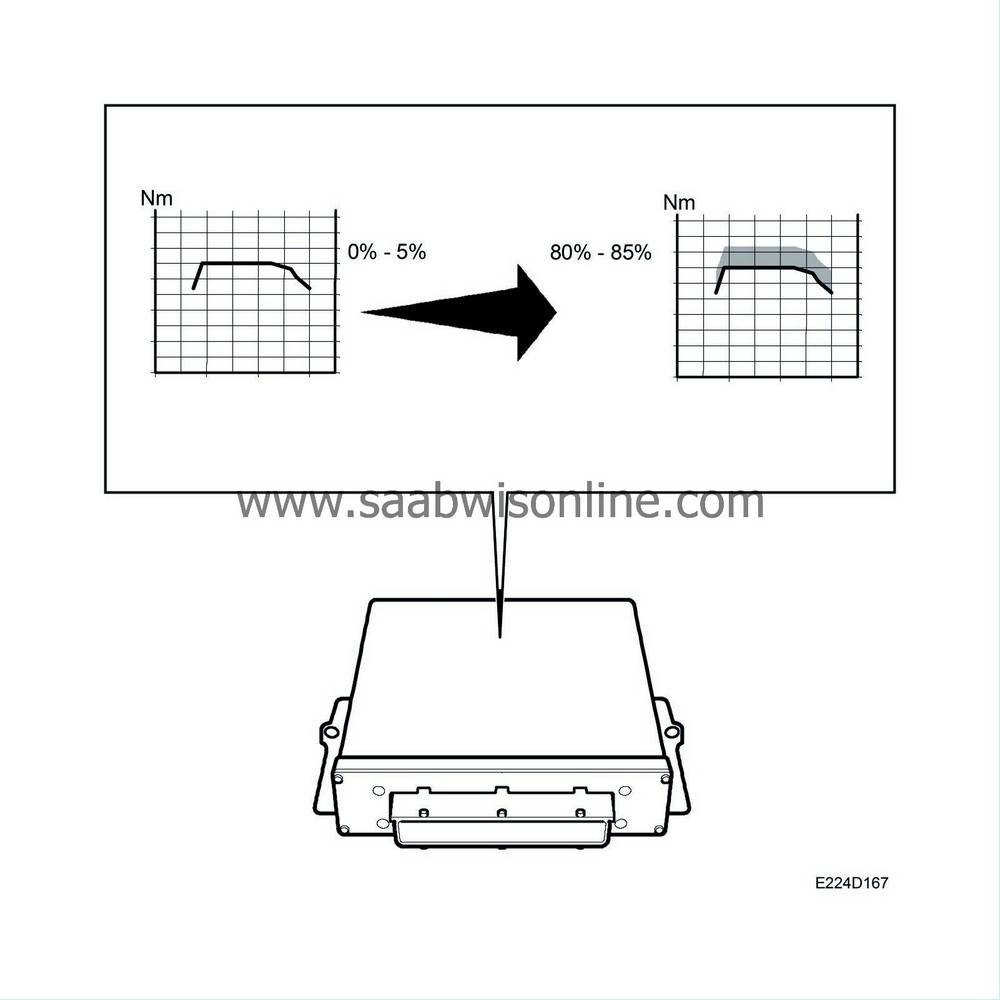
With ethanol contents between 5-80% the torque varies steplessly between the two tables. At coolant temperatures below +50 °C the engine torque is limited if the ethanol content is between 50-85%. Due to the fact that only a small part of the fuel is evaporated when it is cold, the engine will misfire more or less powerfully if the engine torque is allowed to reach the normal maximum value. This is avoided by limiting the engine torque.
The high engine torque in the Saab BioPower engines facilitates environmentally friendlier driving. Using the engine's high torque at low engine speeds instead of needing to rev the engine harder is favourable for fuel consumption and emissions.
| Manual gearbox, engine torque limitation |
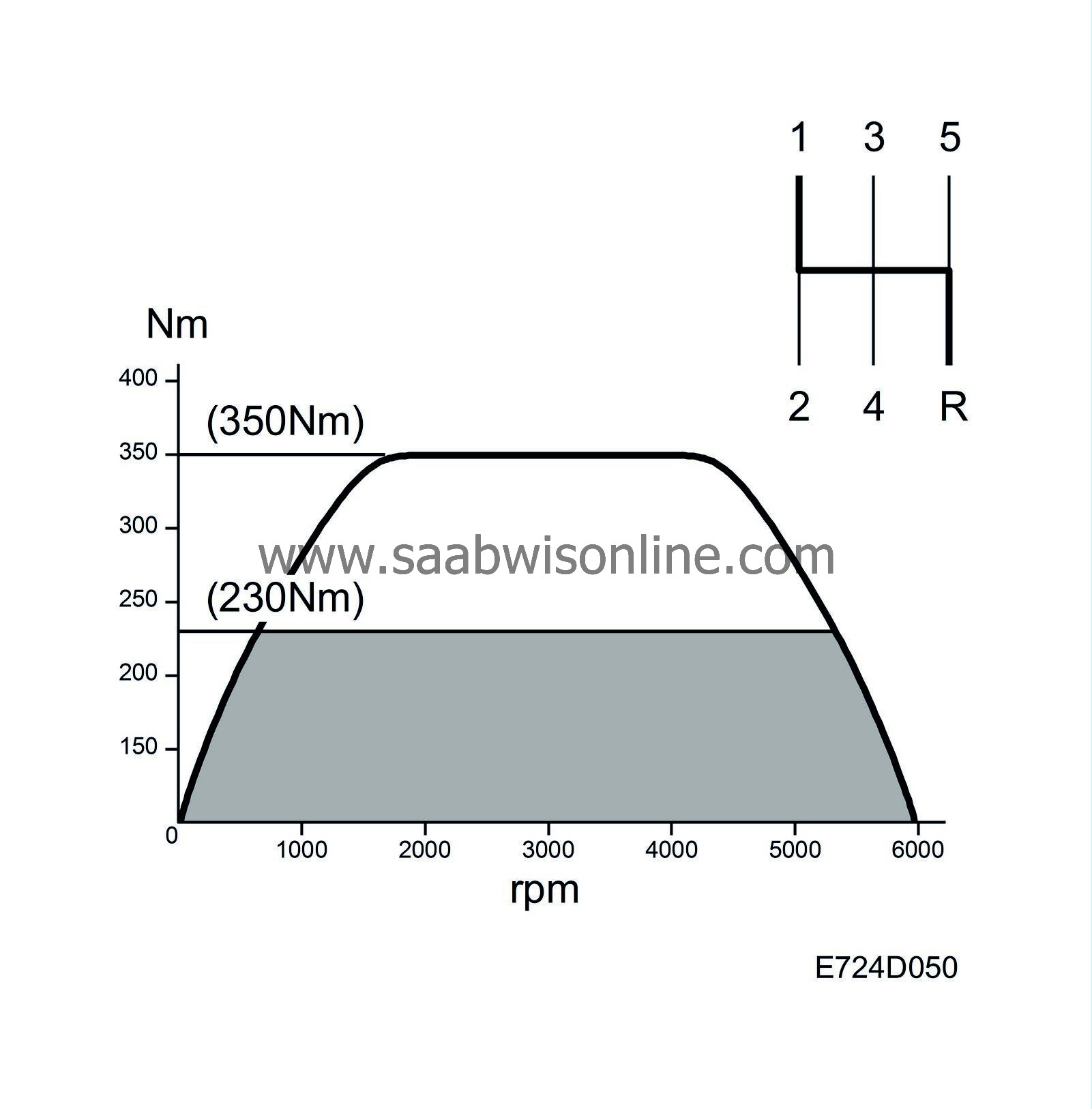
The maximum engine torque must be limited at low gear ratios for reasons of strength.
The control module calculates the engaged gear by comparing engine speed with vehicle speed.
If the gear ratio corresponds with gear 1 or R, the control module reads bus information "Reverse gear selected" from DICE to distinguish between them.
Engine torque is limited to:
Gear 1 or R is limited to 230 Nm on engine alternative B205E/B235E . Engine torque is limited to 350 Nm in other gears.
On engine alternative B235E , gear 5 is gradually limited if the engine speed is below 2400 rpm. This is to avoid vibration.
On engine alternative B235R , gear 1 is limited to 280 Nm and reverse gear, R, is limited to 230 Nm. Torque limitation in gears 2-5 is 380 Nm.
The engine torque value is converted to mg air/combustion and constitutes the maximum air mass/combustion allowed by the gearbox.
| Automatic gearbox, stall limitation |

The maximum engine torque must be limited when the car is stationary and the brake pedal is depressed for reasons of strength.
Engine torque is limited to 200 Nm.
Engine torque is converted to mg air/combustion and constitutes the maximum air mass/combustion permitted by the automatic transmission.
| TCM, engine torque limitation |
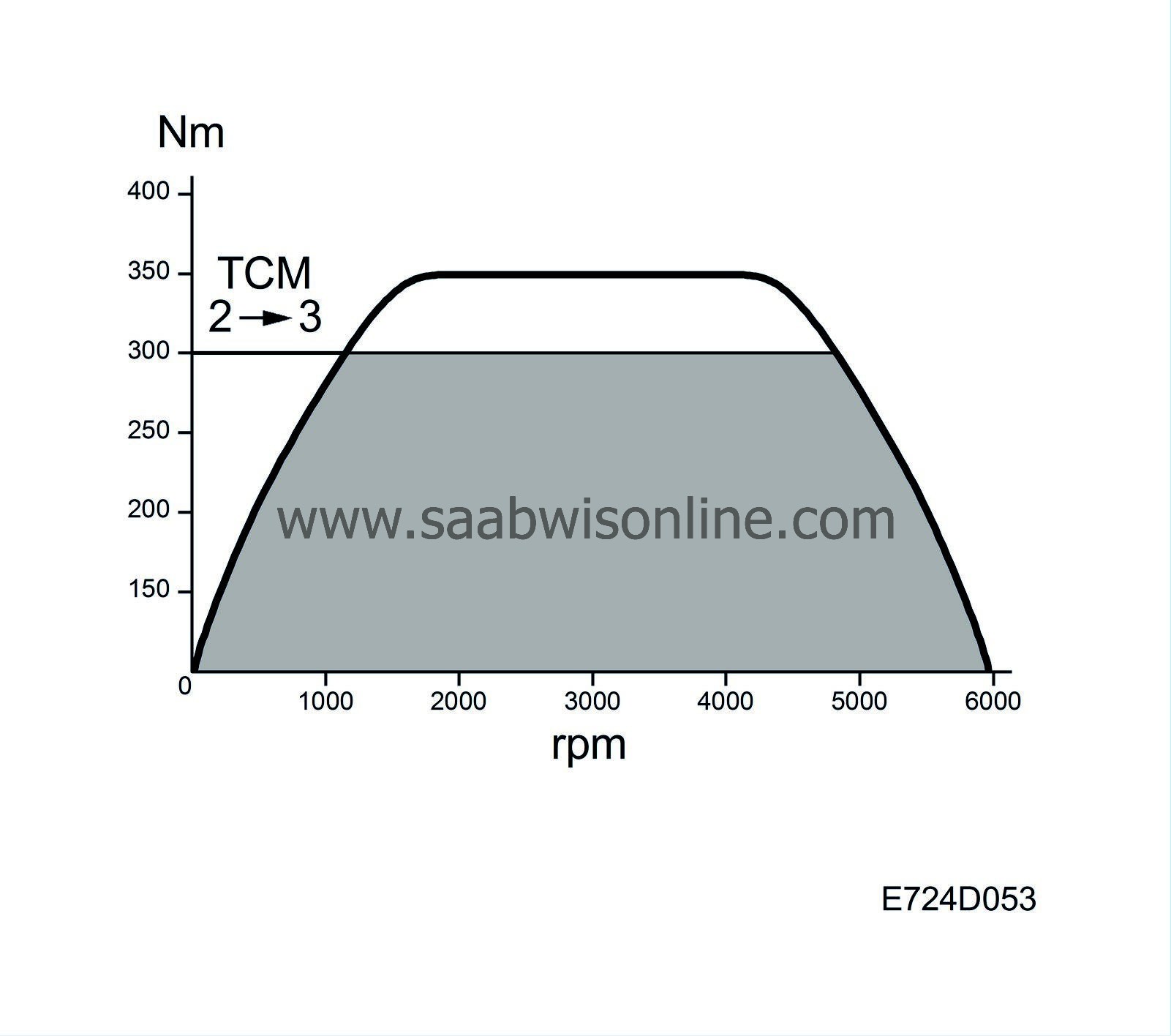
The maximum engine torque must be limited in gear R, 1 and 2 for reasons of strength. TCM will send continuous bus information specifying the maximum permissible engine torque.
The maximum permitted engine torque is also limited during gear changing.
|
TCM sends maximum permissible engine speed:
|
|
|
R
|
270 Nm
|
|
1
|
330 Nm
|
|
2
|
330 Nm
|
|
3
|
330 Nm
|
|
4
|
350 Nm
|
|
5
|
350 Nm
|
TCM then sends maximum permissible engine torque to protect the gearbox.
Trionic T7 converts Nm to mg air/combustion. The value constitutes the maximum air mass/combustion permitted by the automatic transmission.
| Braking |

The maximum engine torque must be limited when the brake pedal is depressed for reasons of strength. The following three conditions must be fulfilled for this function to be activated:
| • |
B+ on the input from brake light switch, pin 63.
|
|
| • |
B+ on the input from brake and clutch pedal switches, pin 29.
|
|
| • |
Brake light ON (Bus from TWICE)
|
|
Engine torque is limited to 200 Nm.
Engine torque is converted to mg air/combustion and constitutes the maximum air mass/combustion permitted by the automatic transmission.
| Traction Control / ESP, engine torque limitation |
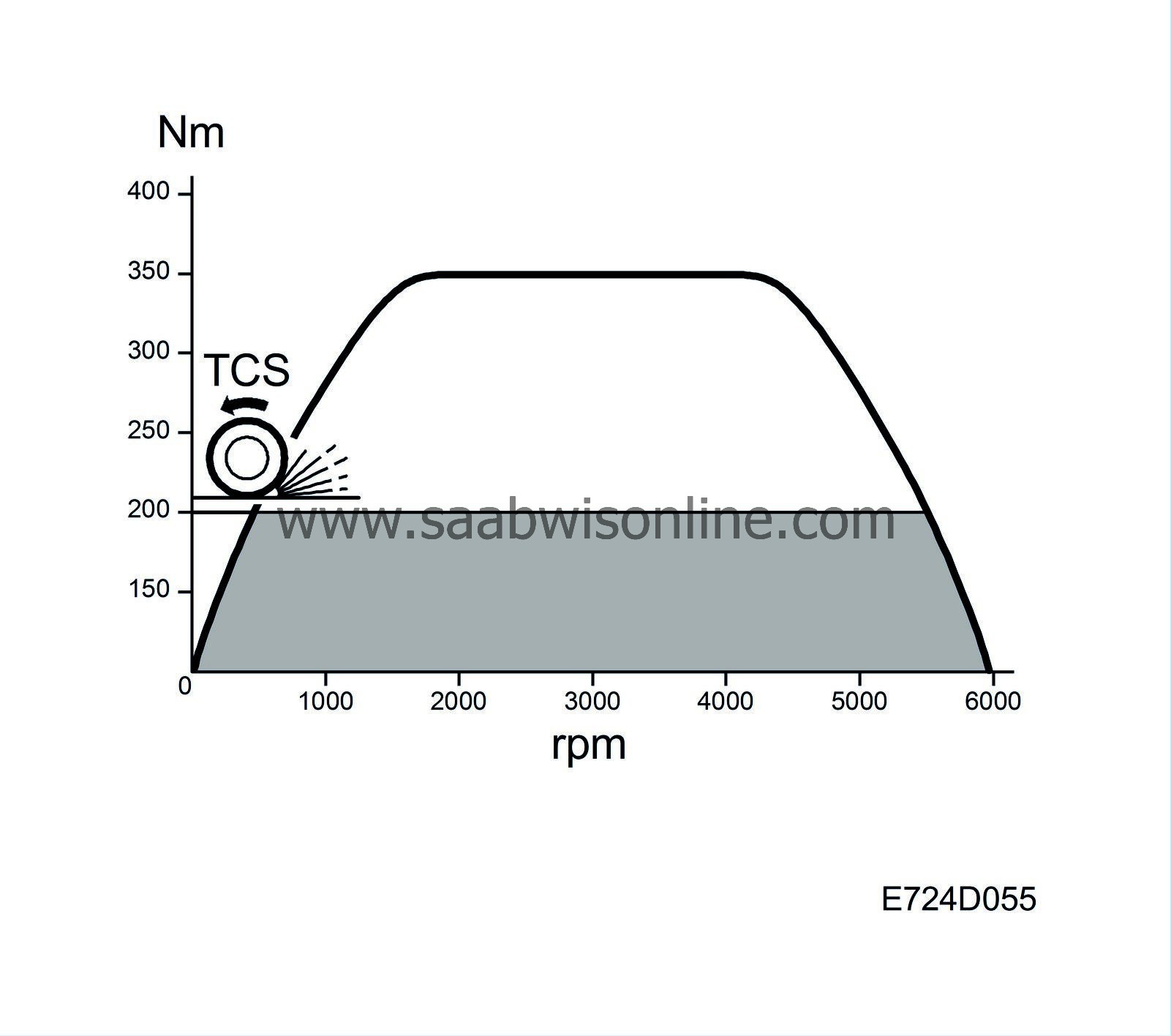
Cars with certain engine variants can be equipped with Traction Control in the ESP control module. The TCS function in the ESP control module works both by reducing engine torque (request to Trionic) and applying the brakes on the driving wheels. The rear wheel speed is used as a reference to compare both driving wheels individually. Wheel spin occurs when one of the driving wheels rotates faster than the rear wheels.
ESP receives 2 bus messages from Trionic T7:
| • |
Engine torque
The value of the bus message "Engine torque” can vary between -100 Nm and 400 Nm. ESP uses engine torque to calculate the current drive wheel torque. |
|
| • |
Pedal position
ESP uses the value to determine how much wheel spin to allow. |
|
| • |
Current gear
Knowing the engine torque and the current gear ratio, ESP is able to calculate the driving wheel torque. |
|
ESP sends one bus message that Trionic T7 uses:
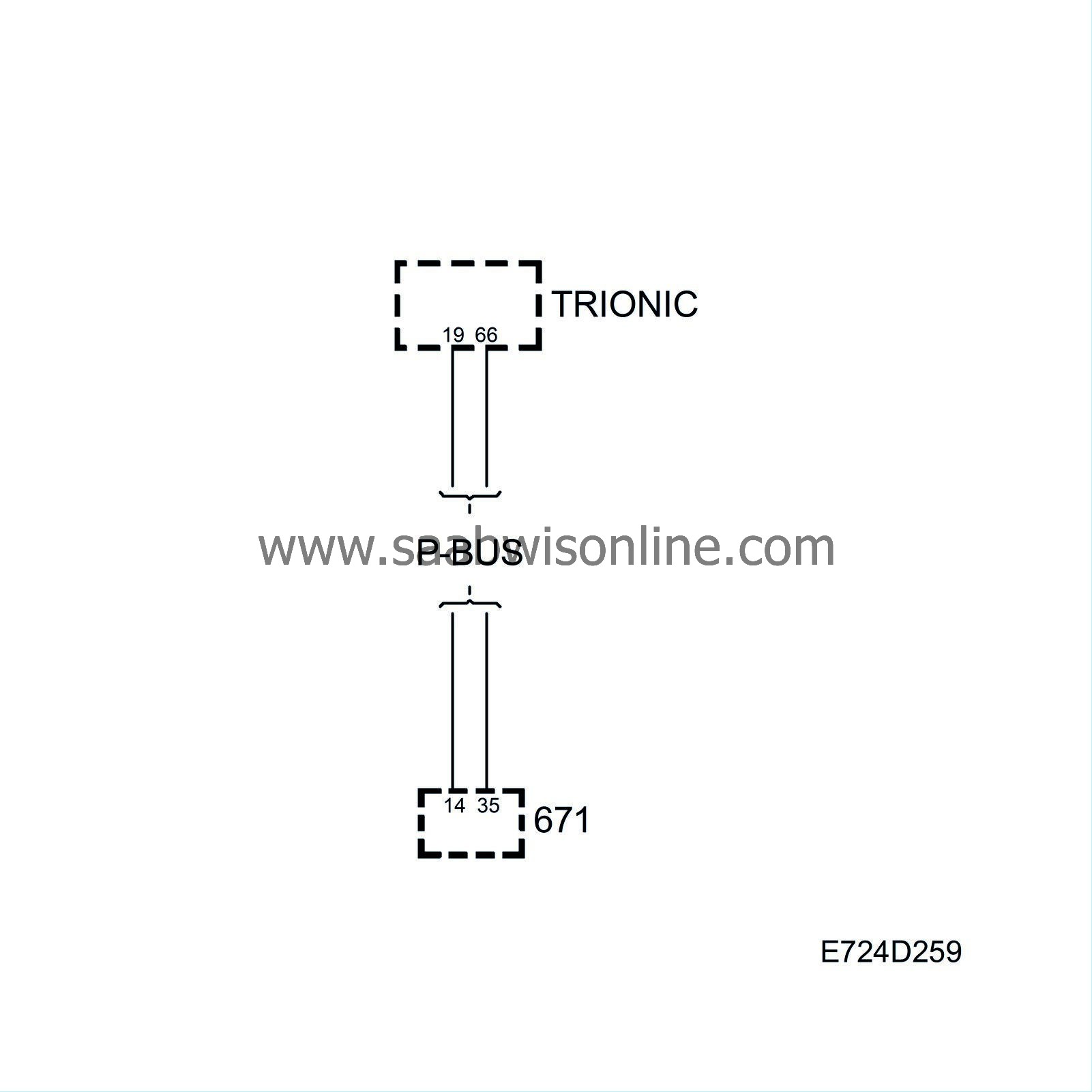
| • |
Requested engine torque
The value of this requested torque is used for Traction Control/ESP. Trionic T7 converts Nm to mg air/combustion. The value constitutes the maximum air mass/combustion permitted by ESP. |
|
For further information on Traction Control and ESP, please refer to ESP, System overview .
| Diagnosis |

Trionic can detect three different faults that affect the TC function. ESP generates diagnostic trouble codes and turns on the TCS OFF lamp.
The three faults are:
| • |
No communication with ESP control module. DTC P1625 generated by Trionic.
|
|
| • |
Trionic detects that ESP has been programmed for the wrong engine variant (programmed variant is sent from ESP on P-bus, ESP generates DTC).
|
|
| • |
Fault in the Trionic throttle control (limp-home). With this fault, the CHECK ENGINE lamp will also go on and the cause of the fault can be found in Trionic.
|
|
| Knock limitation |

Knock control first retards the ignition timing for each cylinder. If the mean value for the ignition retardation for all the cylinders exceeds a certain value, fuel enrichment will take place.
If the mean value for ignition retardation increases further, the maximum permissible air mass/combustion will be reduced.
This reduction takes place continuously as the ignition retardation increases.
The value constitutes the maximum air mass/combustion value permitted by knock control.
| Note | ||
|
Knock control on modern engines is not a safety function but a normal function. Consequently, it is considered normal when knock control reduces engine torque in certain cases. The engine knock control increases for e.g. high intake air temperatures or high coolant temperatures. Further influencing factors are driving at high altitudes and low octane fuel. |
||
|
Certain engine variants require petrol with an octane rating of 98 RON in order to provide the specified engine torque/power. |
| Vehicle speed limitation |
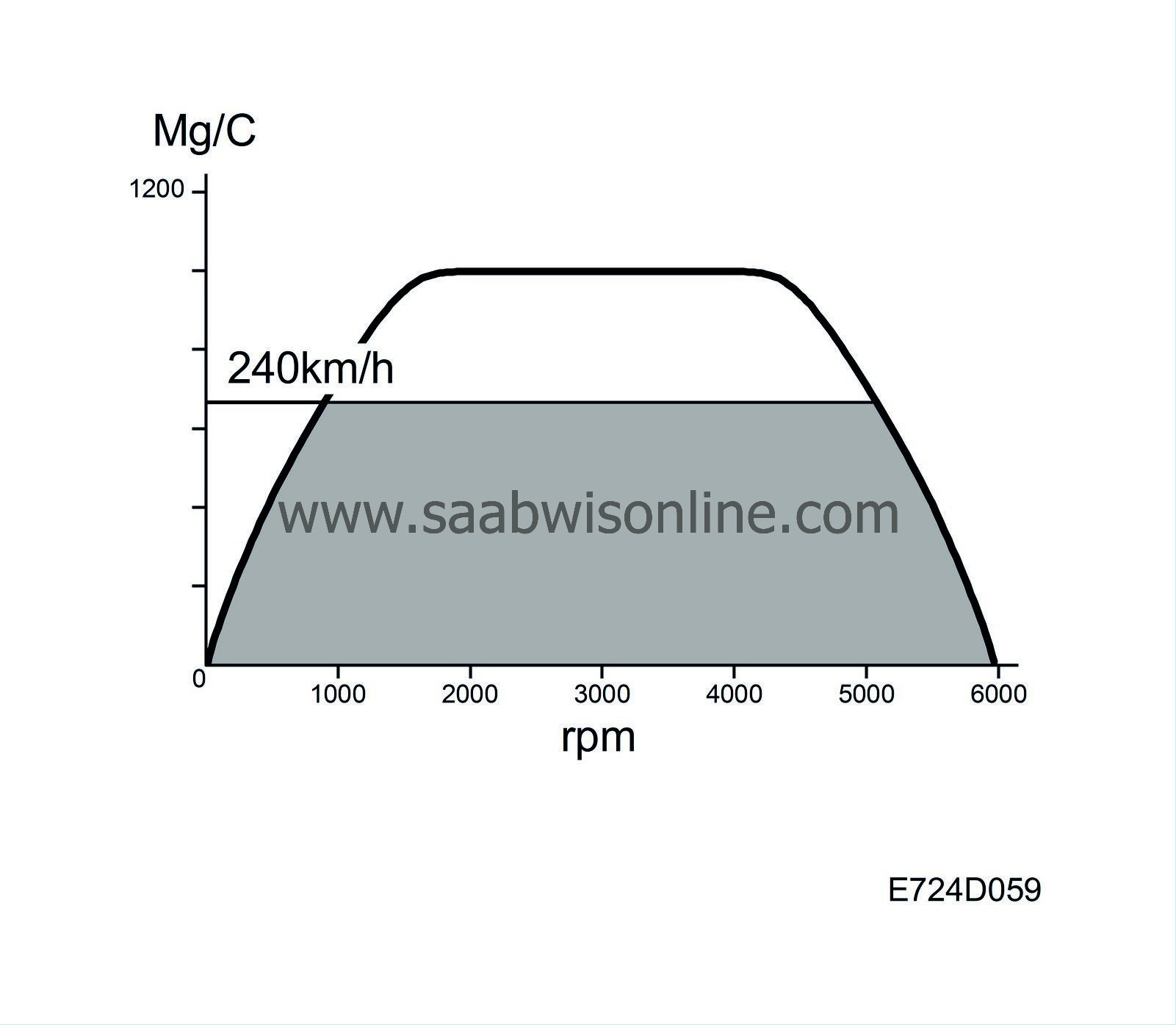
When the engine speed reaches the maximum allowed, the engine torque will be limited by limiting the maximum permissible air mass/combustion.
The highest permitted speed varies between engine alternatives. The highest permitted speed for alternative B235E is 240 km/h and for alternative B235R the equivalent value is 250 km/h.
| Engine speed limitation |

When the engine speed reaches 6000 rpm and the coolant temperature falls below 60°C, the engine torque is limited due to the fact that the maximum allowed air mass/combustion is limited. If the coolant temperature is above 80°C a further 100 rpm is allowed, i.e. the maximum allowed air mass/combustion in this case is limited at 6100 rpm.
| Turbo speed limitation |
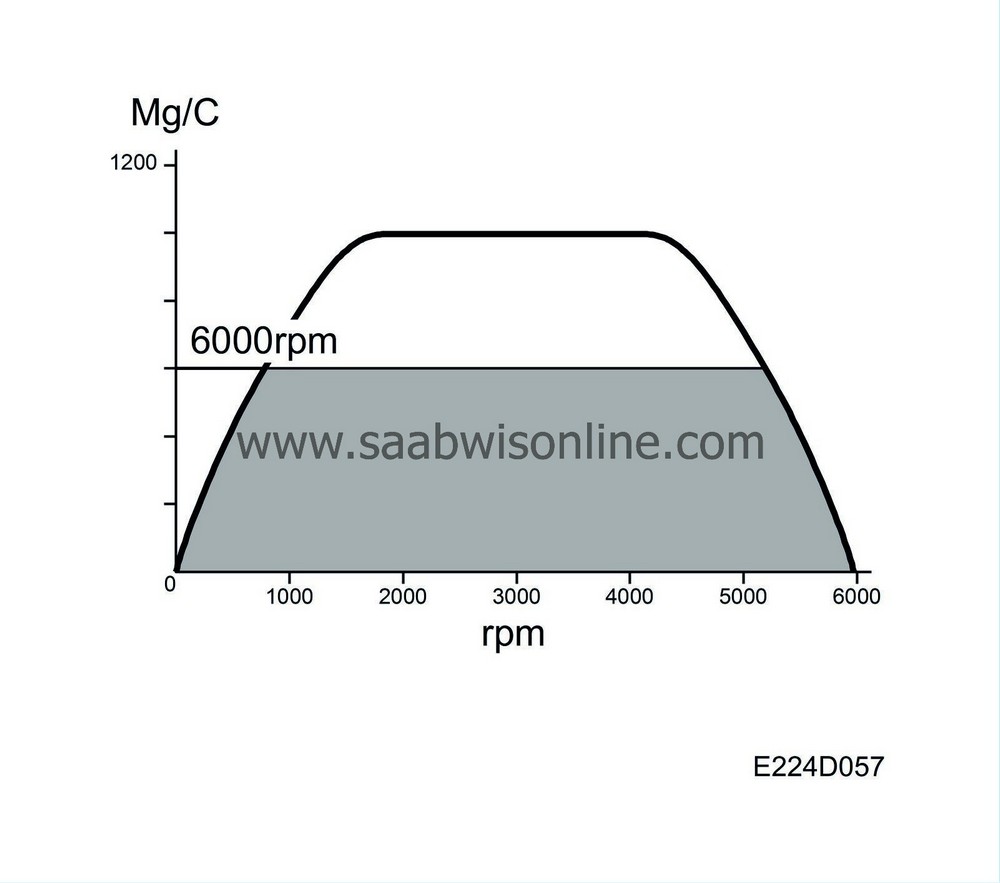
The maximum permissible air mass/combustion is limited at low atmospheric pressures to protect the turbo from overrevving. The function is dependent on atmospheric pressure and engine speed.
| Limitations after system faults |
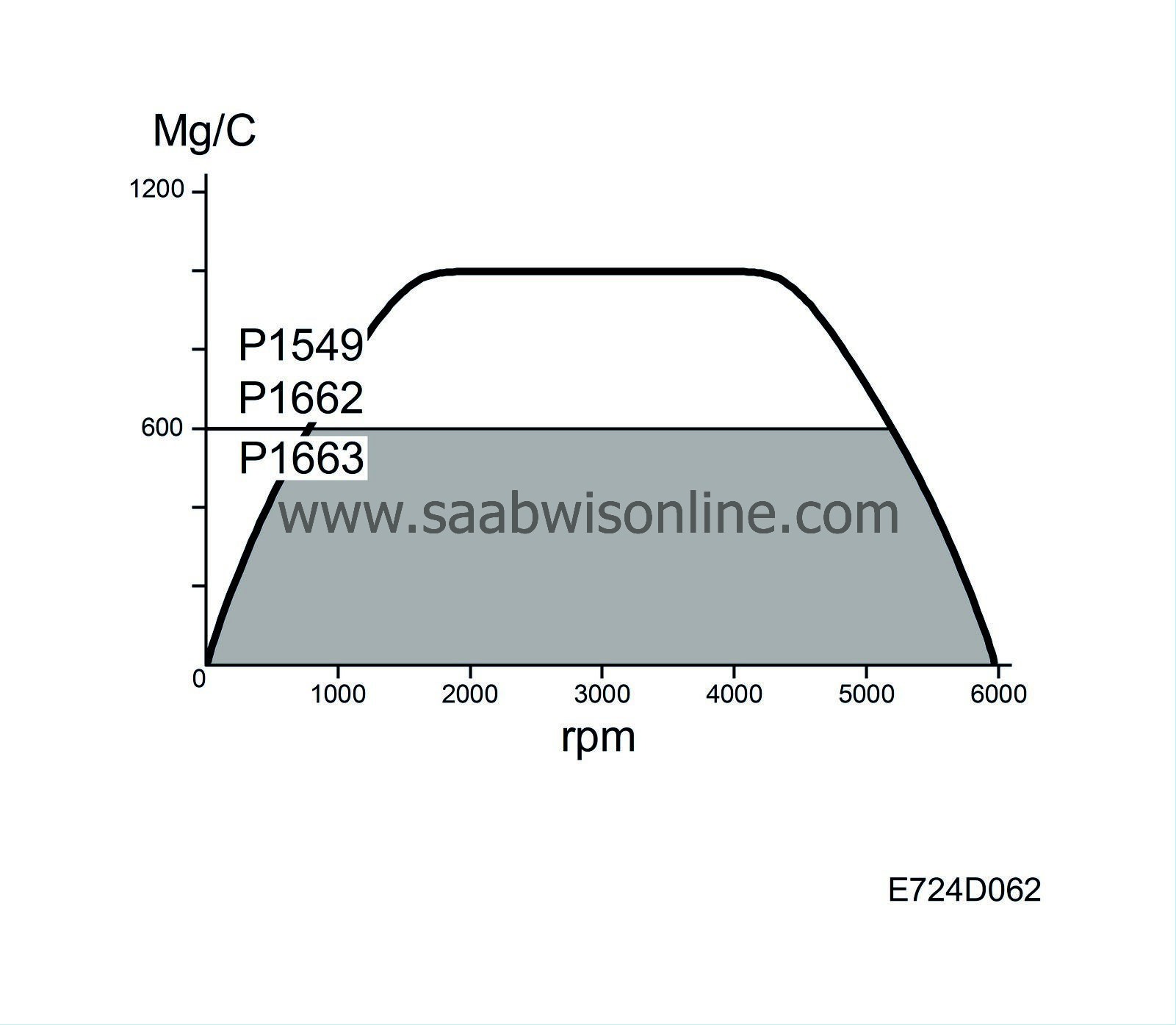
The maximum permissible air mass per combustion is limited in the following cases:
| • |
Electrical fault in the charge air control valve
|
|
| • |
Mechanical fault in the charge air control valve causing the current air mass to exceed that requested.
|
|

